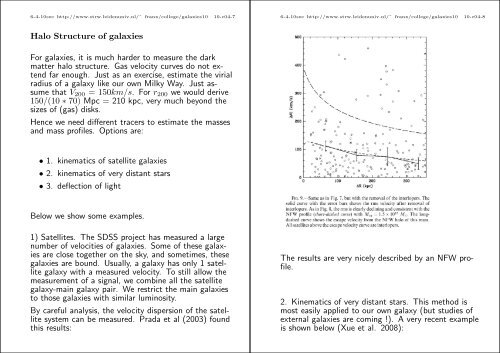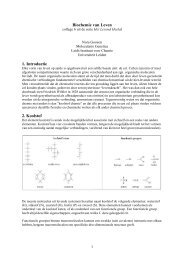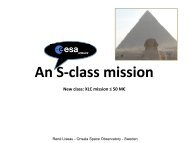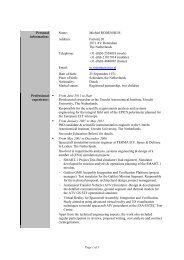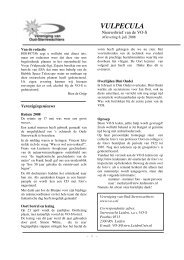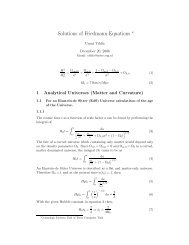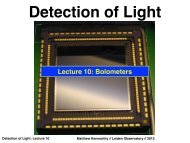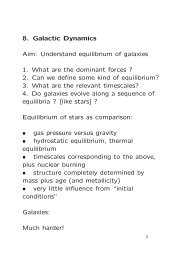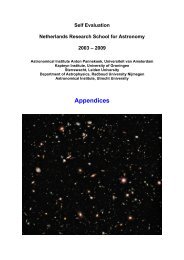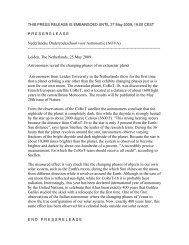4. Structure of Dark Matter halos Obviously, we cannot observe the ...
4. Structure of Dark Matter halos Obviously, we cannot observe the ...
4. Structure of Dark Matter halos Obviously, we cannot observe the ...
You also want an ePaper? Increase the reach of your titles
YUMPU automatically turns print PDFs into web optimized ePapers that Google loves.
6-4-10see http://www.strw.leidenuniv.nl/˜ franx/college/galaxies10 10-c04-7<br />
Halo <strong>Structure</strong> <strong>of</strong> galaxies<br />
For galaxies, it is much harder to measure <strong>the</strong> dark<br />
matter halo structure. Gas velocity curves do not extend<br />
far enough. Just as an exercise, estimate <strong>the</strong> virial<br />
radius <strong>of</strong> a galaxy like our own Milky Way. Just assume<br />
that V200 = 150km/s. For r200 <strong>we</strong> would derive<br />
150/(10 ∗ 70) Mpc = 210 kpc, very much beyond <strong>the</strong><br />
sizes <strong>of</strong> (gas) disks.<br />
Hence <strong>we</strong> need different tracers to estimate <strong>the</strong> masses<br />
and mass pr<strong>of</strong>iles. Options are:<br />
• 1. kinematics <strong>of</strong> satellite galaxies<br />
• 2. kinematics <strong>of</strong> very distant stars<br />
• 3. deflection <strong>of</strong> light<br />
Below <strong>we</strong> show some examples.<br />
1) Satellites. The SDSS project has measured a large<br />
number <strong>of</strong> velocities <strong>of</strong> galaxies. Some <strong>of</strong> <strong>the</strong>se galaxies<br />
are close toge<strong>the</strong>r on <strong>the</strong> sky, and sometimes, <strong>the</strong>se<br />
galaxies are bound. Usually, a galaxy has only 1 satellite<br />
galaxy with a measured velocity. To still allow <strong>the</strong><br />
measurement <strong>of</strong> a signal, <strong>we</strong> combine all <strong>the</strong> satellite<br />
galaxy-main galaxy pair. We restrict <strong>the</strong> main galaxies<br />
to those galaxies with similar luminosity.<br />
By careful analysis, <strong>the</strong> velocity dispersion <strong>of</strong> <strong>the</strong> satellite<br />
system can be measured. Prada et al (2003) found<br />
this results:<br />
6-4-10see http://www.strw.leidenuniv.nl/˜ franx/college/galaxies10 10-c04-8<br />
The results are very nicely described by an NFW pr<strong>of</strong>ile.<br />
2. Kinematics <strong>of</strong> very distant stars. This method is<br />
most easily applied to our own galaxy (but studies <strong>of</strong><br />
external galaxies are coming !). A very recent example<br />
is shown below (Xue et al. 2008):


